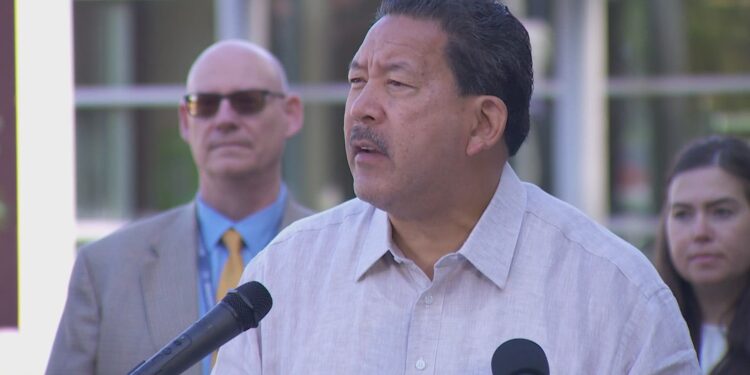Mayor Bruce Harrell announced a $15 million community safety initiative Monday targeting youth gun violence through evidence-based intervention strategies and community partnerships across Seattle’s highest-risk areas.
The comprehensive investment responds to alarming statistics showing Seattle police have seized 1,380 firearms this year, averaging five guns per day, while arresting 17 children for carrying weapons in the first six months alone, including one child as young as 13.
“Today I am announcing nearly $15 million for community safety investments,” Harrell said, emphasizing the strategy’s focus on preventing violence before it occurs rather than responding after incidents happen.
Eleven schools, including Garfield High School, will receive targeted gun violence reduction resources based on data analysis identifying areas with the greatest documented need. The selection process utilized police data and community indicators to direct funding strategically.
Dr. Tarance Hart, Garfield High’s principal, described the urgent need for intervention as his school confronts the reality of losing students to gun violence. Recent campus incidents contributed to the city’s decision to prioritize comprehensive prevention efforts.
“We must keep them safe so they can receive the education they deserve here at Garfield,” Hart said, highlighting the connection between safety and educational outcomes.
The initiative combines police data analysis with community-based mental health services and violence prevention specialists to identify and support at-risk youth. Seattle police conduct weekly meetings analyzing shots fired across the city to inform intervention targeting.
“We have violence interrupters in our building, and the goal of these individuals is to build relationships with students but also prevent escalation,” Hart explained, describing one component of the multi-faceted approach.
Community-based organizations will deliver gun violence prevention services under the new program. Beginning Tuesday, the city will solicit proposals from local providers to implement evidence-based interventions tailored to specific neighborhoods and schools.
The investment includes robust accountability measures, with plans to track outcomes and hire external evaluators to assess contractor performance. This oversight structure aims to ensure funding effectively reduces youth firearm access and prevents violence in Seattle’s most vulnerable communities.
The data-driven approach represents a shift toward proactive intervention rather than reactive enforcement, focusing resources on early identification of risk factors and community-based support systems.
The initiative reflects growing recognition that addressing youth gun violence requires coordinated efforts between law enforcement, schools, mental health providers, and community organizations working together to create comprehensive safety networks.







